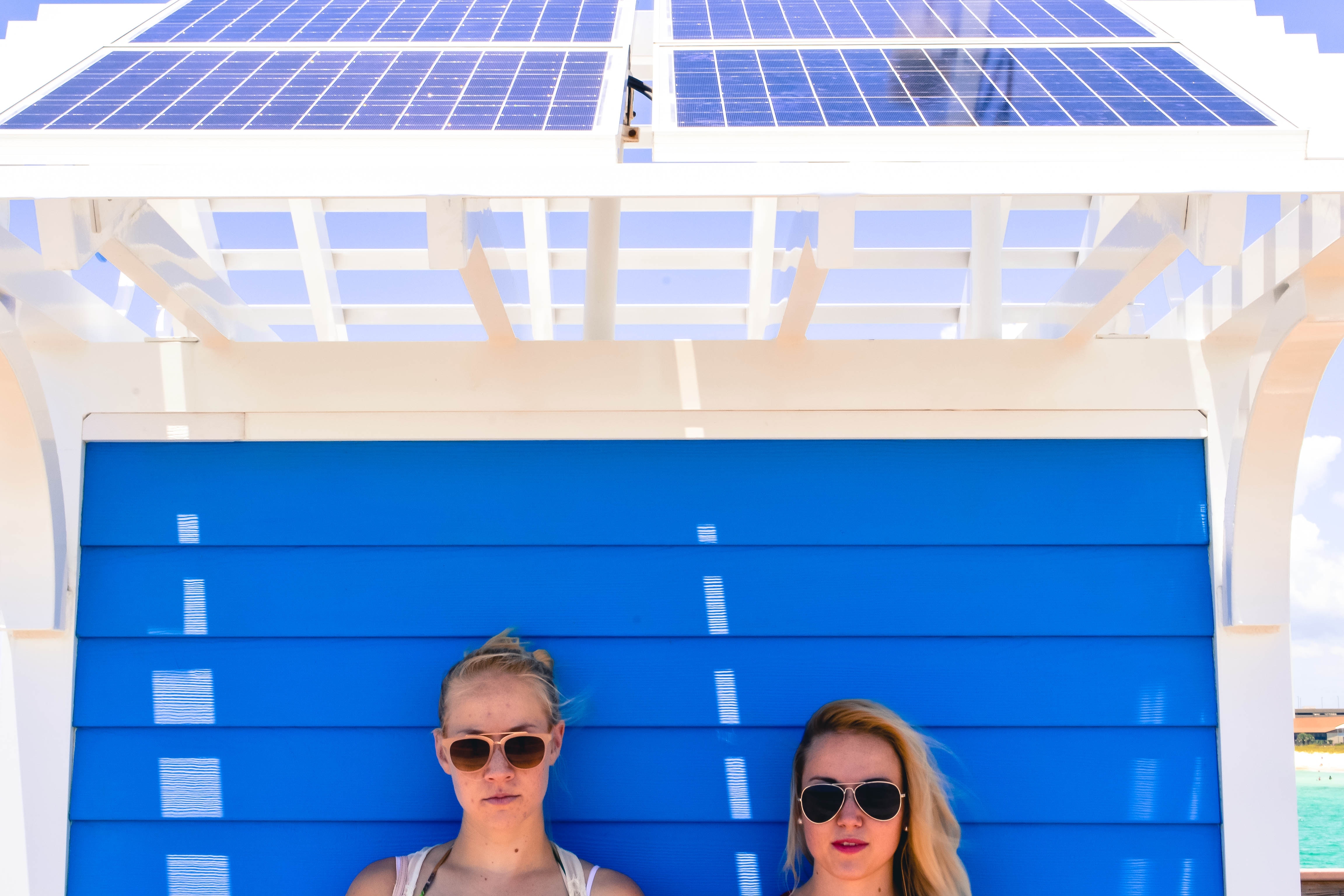I first came to Acadia as a Biology professor in 1973. When I arrived, my initial research interests were in the ecology of freshwater lakes and rivers, but a resurgence of interest in Fundy tidal power in 1976 created a great need to organise research to answer the inevitable questions about the effects of tidal power on the Bay of Fundy. This has remained my major research focus ever since.
As one of the earlier articles in this series mentioned, we have been considering generating electricity from the Fundy tides for more than a hundred years. In fact, I would argue that most of what we know about the Bay of Fundy as an ecosystem has come about because of studies generated by tidal power proposals — many of those studies have been conducted by Acadia students. Most of the time, the engineering concept was to construct a dam (or barrage) across the mouth of a tidal river or across a bay such as Minas Basin, allow this to fill with water during the flood tide, and then force all of that water out through turbines when the tide is ebbing. This is called tidal range generation, and it causes huge environmental problems, many of which are associated with the dam, not the turbines. If the dam cuts across an estuary that fish move through to get to their spawning grounds, they will probably have to pass through the turbines when they head out to sea again. That is the situation with the Annapolis tidal generating station, even though there are two fishways built into the dam. The fact is that not enough fish seem to be able to find them.

One of the problems that arises in relation to tidal power (and with other environmental activities like fracking) is the spread of misinformation. A previous article in this series seemed to leave the impression that the turbine was responsible for the disappearance of the striped bass population in the Annapolis River. That is not the case. We showed in 1975 (well before the turbine was installed in 1984) that almost all of the suitable spawning ground in the lower Annapolis River had been eliminated by the building of the Annapolis Causeway in 1960. There were a few striped bass able to spawn each year in the Annapolis, but the vast majority of the fish that sustained the sports fishery in the area were migrants from other rivers, many from the Hudson River in the USA. The Annapolis tidal station has been a useful study case for Acadia faculty and students. Because the dam was constructed more than 20 years before the turbine was installed, it is possible to identify the different effects of the dam and of the turbine. That would not be the case for a dam built directly for the purpose of housing turbines.
Nonetheless, the tidal turbine at Annapolis remains a significant challenge for fish populations: many of the fish, both adults and juveniles, which end up going through the turbine suffer fatal damage. Although none of the species that spawn in the Annapolis River have been eliminated, their populations have changed significantly. That will always be a serious concern for tidal power development in the Bay of Fundy, and is one of the major reasons for the low level of enthusiasm for energy development based on tidal range.
As outlined in previous articles, the present approach is aimed at evaluating the potential and effects of tidal stream devices, which work on the flow of water rather than the water stored behind a dam. Many of the concerns about tidal power in the past also apply to this approach. What are the effects on fish, mammals, birds, water flows and sediments, etc.? Even though these turbines are spaced apart without the support of a dam and there is potentially enough room for fish to go around each turbine, we must understand the risk to fish. We do not know whether they will be able to sense the presence of a working turbine and avoid it. As more turbines are deployed, the alternative space for them to move upstream and downstream becomes less, and so a large number of turbines in a narrow passage could begin to act much like a dam. The risk to fish and mammals is the focus of much of our research at the present time. We need to know how animals respond to a turbine, and what their response will be. That can only be done when we have turbines placed in the water for trials. A few observations of fish and mammals in the vicinity of turbines tested in Britain and the USA have shown no evidence of any being directly impacted by the spinning blades, but absence of evidence is not evidence of absence! It is not enough knowledge on which to base an assessment of risk. The effects on fish and mammals are likely to vary according to location, turbine technology, and species. Obviously we have to complete that research before any decision is made to deploy large numbers of turbines.
Several other environmental issues raised when the tidal stream studies were initiated some eight years ago have been examined, and some of them were found not to be of major concern. For example, it was thought that some of the big ice blocks that form in winter could be drawn down to damage a turbine or monitoring equipment placed on the bottom. That turns out to be very unlikely.
One of the major challenges results from the extremely dynamic flows of water through passages that are potentially suitable for tidal stream turbines. Recent research in the Bay of Fundy has led to a number of new technologies for monitoring environmental effects, such as fish and mammal behaviour, and of mooring equipment in these very high water flows. These represent innovations that will have value when applied elsewhere.
The saga of Fundy tidal power will continue for some time yet. Nova Scotia has the dubious distinction of being the province with the largest per capita contribution to greenhouse gas emissions in Canada. Recently, changes in policy have triggered a major shift toward renewable energy to replace our heavy dependence on coal and oil. In 2015, about 27% of our electricity came from renewable sources, which is a significant improvement over the 12% of a decade ago. Most of that has come from wind power, but there is probably little potential for much greater use of wind energy because it is so variable and unpredictable. Given the enormous and predictable tidal resource that is adjacent to our shores, it is natural that we would look to tidal power to displace more fossil fuels. In addition, there are many other places around the globe that have potential for tidal power development. The accumulated experience gained by Nova Scotians on environmental, technical and social issues over the last century could be of great value to such global developments, and be an economic asset to the province. Many of the Acadia students who have worked on this topic in the past are pursuing careers as university faculty (including some at Acadia) and as research scientists with government agencies.
It may be that in the end tidal stream approaches to electricity generation will prove too costly, or too technically difficult to pursue on a large scale. Most of the earlier proposals for tidal power development in the Bay of Fundy were in fact not abandoned because of environmental concerns: they were not built primarily because it proved uneconomic in comparison with cheap oil. Given the present state of oil supply in the world, that could very well be the case even now.
But regardless of the economic evaluation of tidal energy, Nova Scotia needs to look for ways to get away from its dependence on fossil fuels if it is be a responsible member of the world community. The truth is that we will be less directly impacted by global climate change resulting from greenhouse gas emissions than most of the rest of the world because of the buffering effects of the sea around us. Deciding to continue burning coal and contributing to that global problem simply because a viable alternative is a little more expensive is a morally reprehensible position. We need to look at this resource, evaluate its effects, and learn how to benefit from it safely without compromising other benefits that we have from the Bay of Fundy. If we are successful, we not only get off fossil fuels, but can build an industry that would yield great benefit in the future. I am quite confident that we will find a way to capitalise on this clean, predictable resource, and that Acadia faculty and students will be major contributors to the knowledge that is needed, as they have been over the last 100 years.






Because NS Power is a bit more expensive than tidal power which is the money factor of why you are involved so far; in not so many words you are saying that the fishing industry of both commercial and anglers is secondary to experimenting with something that you have just stated in this report that none of you know very much about anything concerning the turbines and the impact of it in the Minas Channel!?:-(
All for the sake of money because NS Power is and has been over producing the needs of local consumption of electricity and most of it produced here in Nova Scotia is exported even outside of the country of Canada!? 🙁
Which means that you are likely destroying the native fish habit of Nova Scotia to produce a few years of electricity bound for the United States of America until the Labrador electrical link is connected which is supposed to be 100% renewal resources from water solving the pollution issues with Nova Scotia power production!?
Who is speaking about both of them in discerning similarity and differences between them?:-(
* In one hand is the other…* George